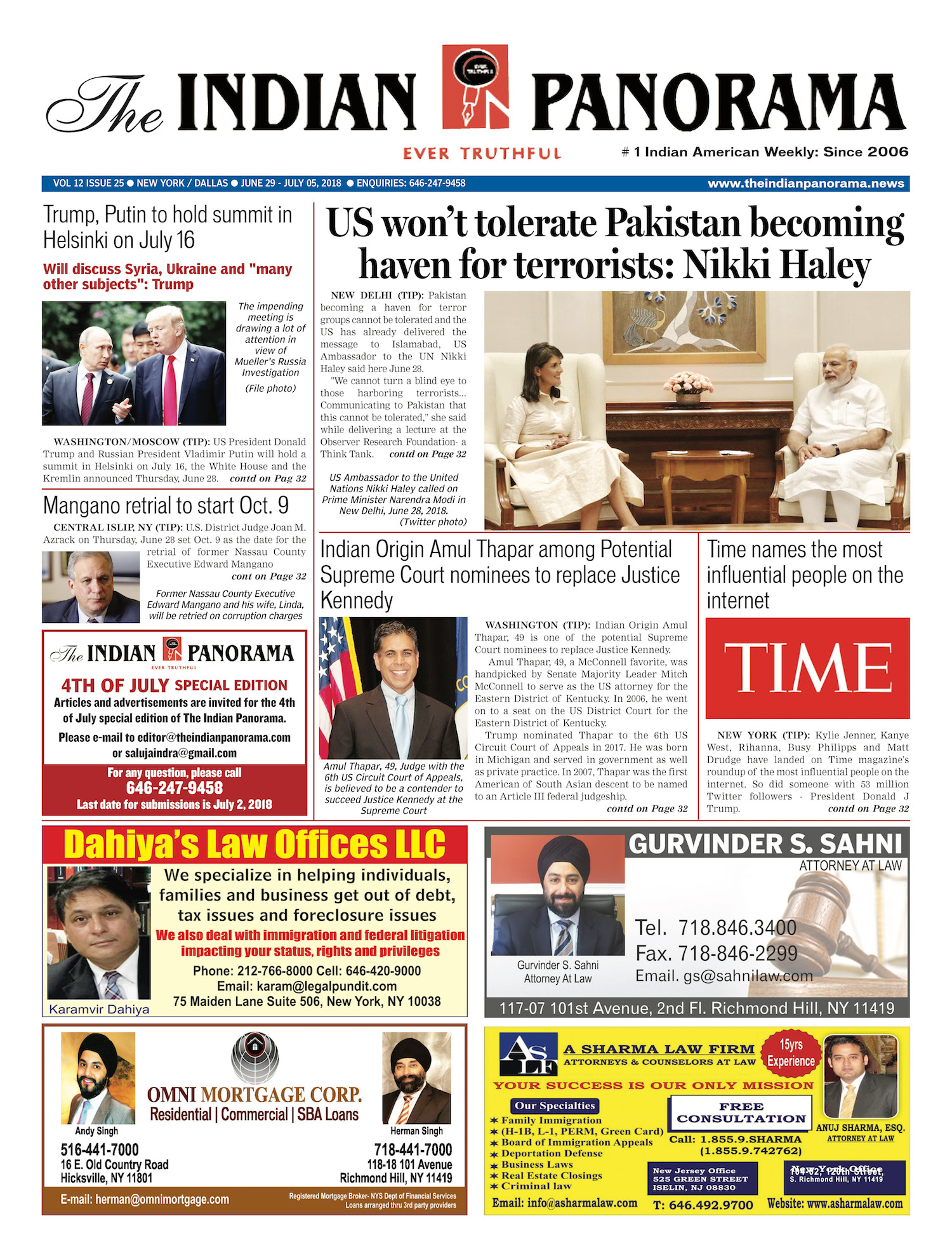
The private sector in India “hopes that everything would be hunky dory once the pro-business Modi becomes the PM. Unfortunately, problems of India are not confined to big business only. There are millions (45 per cent of industrial employment) employed in small-scale and micro-sector enterprises. Around 90 per cent of the labor force works in the unorganized sector. The small and medium industries contribute 50 per cent of exports and need policies that would increase their competitiveness” says the author.
All businesses, whether domestic or foreign, are waiting for the results of India’s general election. Why should there be so much apprehension about the future of the Indian economy and why should it depend on who forms the next government at the Centre? After all, India is a mature, almost middle-income country with per capita income of Rs 39,961 per annum (2013-14) and GDP of $1.7 trillion.
We have good roads, ports, airports, well-functioning courts of justice, mega cities, luxury housing, malls, schools, colleges, hospitals — everything a country needs. We have a thriving service sector and an established manufacturing sector. All these will remain intact even if the UPA goes and another party forms the government. huge economy like India’s should be on auto pilot.
But it is not — because key decisions that would pave the path for the economy in future are perceived to lie today in the hands of the new government. Even though the Indian economy did take off and gather momentum, it lost speed mid-air and things began to look less clear and, in fact, far from rosy. Consequently, key business decisions were kept on hold and are now dependent on who will form the government at the Centre and what policy changes will come about.
But the UPA government has left the country’s finances in good shape. In the last interim Budget Mr. Chidambaram wanted to play it safe by cutting public expenditure in order to control the fiscal deficit. The interim Budget has also increased the allocation of Central funds to states. Hence the power of the Centre in the next one year will be diluted vis-à-vis states. The incumbent government has tried its best to create a good image of itself in the last one month by inserting ads in national dailies every day about its achievements and clearing pending projects post haste.
People, especially young voters, however, will make up their own minds. The common person is awaiting change and desires a reprieve from continuous inflation, corruption and general ineffectiveness of government decisionmaking. According to the latest data, in the last quarter of 2013, GDP growth was only 4.7 per cent and not 5 per cent, which would have indicated an upturn in the economy. There is, however, good news that in February 2014, manufacturing output has notched up and was at its highest in recent months but one month’s performance is not enough. Why has the UPA been so ineffective in pushing GDP growth in its second term? Why has it not been able to tame inflation? Why has corruption remained the biggest issue? Looking back, it was the three stimulus packages that the UPA government gave after the global economic crisis that was responsible for much of what is wrong today.
As a result of the stimulus packages, the fiscal deficit rose and there was too much liquidity in the economy and inflation rose to 10 per cent. The government and the RBI had no option but to raise interest rates and it did so 13 times before the new RBI Governor took over. Meanwhile, the government’s interest rate policy did a lot of damage to business expectations and investors dithered and held back from investing in industry. People in general lost faith in financial assets, especially with the erosion of the rupee against the dollar, and began seriously buying gold. Consequently, the current account deficit ballooned and there was a threat of the rupee depreciating further.
Only the announcement by the US Federal Reserve about staggering its monetary easing policy brought back FIIs which saved the current account deficit from deteriorating further. But what is alarming is the negative industrial growth which contracted by 0.7 per cent in the third quarter of 2013- 14. Industrial growth slowed down due to demand factors also. The fall in demand has affected all industries, including the fastest-growing automobile sector. The savings rate fell to 30.1 per cent (of GDP) from 36.8 per cent (2008) and per capita private spending growth slipped to 3.7 per cent in 2012-13 from 7.8 per cent a year earlier. People postponed buying consumer durable items and the high EMI (equated monthly installment) has been a daunting factor. If industrial growth, which is the biggest driver of GDP growth, goes down, then GDP growth also declines.
Thus from the peak of 9.2 per cent GDP growth in 2007, today we are faced with a rate of below 5 per cent, which is not high enough to create an adequate number of jobs for youth. When incomes fall, then tax collection also is low and hence the rising fiscal deficit has been a problem. The fiscal deficit has been controlled by squeezing essential expenditure in key sectors which will impact the lives of people. More than anything else, India needs a higher rate of human development, food security, an increase in productivity in agriculture and manufacturing, better governance of cities, sanitation, education, health, safe water, pollution control and women’s safety. In infrastructure, we need better roads, public transport, housing for the poor to improve the quality of life of the less privileged. With cash-starved state governments, little can be expected by way of welfare measures for the poor and the needy. Delhi has no Chief Minister.
It is in need of infrastructural improvements. One can only see a beginning made by Arvind Kejriwal, who ordered the setting up of temporary shelters for the homeless. If Narendra Modi becomes the Prime Minister, the private sector would expect speedy clearances and decisionmaking. It hopes that everything would be hunky dory once the pro-business Modi becomes the PM. Unfortunately, problems of India are not confined to big business only. There are millions (45 per cent of industrial employment) employed in small-scale and microsector enterprises. Around 90 per cent of the labor force works in the unorganized sector. The small and medium industries contribute 50 per cent of exports and need policies that would increase their competitiveness. What happens to the anti-poverty policies for the very poor will also be important. If subsidies are cut — which they are bound to be — what will happen to small and marginal farmers and the lives of those below the poverty line? What kind of social safety net will be offered? It could be training programs, cash in hand, housing, better agricultural inputs or jobs for the unemployed. It is a tall order for the next PM.




Be the first to comment